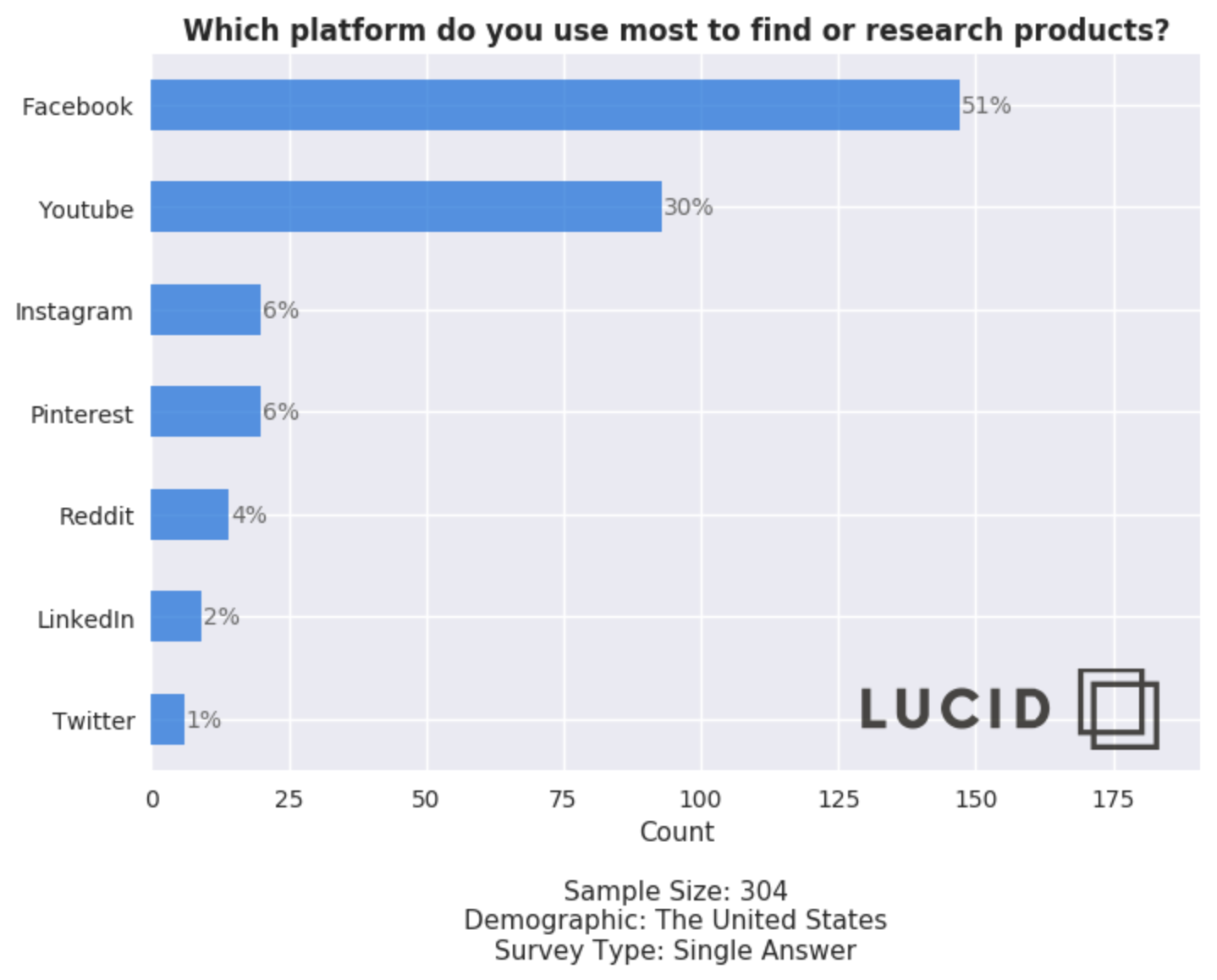Subscribe now and get the latest podcast releases delivered straight to your inbox.
HubSpot report reveals buyers do most product research on social media

Nov 8, 2019

Earlier this week, HubSpot released a report summarizing where consumers do most of their online product research.
This is separate from where consumers do the most online shopping, but even that line is becoming increasingly blurred as more online platforms move into the e-commerce market space.
Where are most of your customers doing their product research? Social media.
Which social media platform is the most popular resource? Facebook.

(Source: Lucid Software via HubSpot)
Social media platforms ranging from Facebook to Reddit and LinkedIn are no longer just spaces for online users to chat and post content. They've become viable hubs of both product research and e-commerce.
If your company still considers social media as a tool for simple engagement or one-off campaigns, it may be time to change tracks. Actively promoting — and cross-promoting — your products opens up your business to more of your target market.
While the holiday shopping season is already underway, it can be worth the effort to hurry and adjust your marketing and selling strategies to reflect HubSpot's report.
What the report says
People are spending more time on social media than ever before. More importantly, they're using that time to do an increasingly diverse number of tasks.
Rather than type queries into Google or another search engine directly, social media-savvy shoppers will look for tutorials and review guides on YouTube or browse through feeds from trusted brands on Instagram.
Last year, 40% of Internet users researched products through various social media channels. When overlaid with HubSpot's poll that 51% of people already inclined to use social media for research use Facebook, that comes out to a potential 20% of all online shoppers using Facebook as their primary resource.
Additionally, roughly 12% of online shoppers turn to YouTube, while Instagram, Pinterest, and Reddit trail further behind.
However, this general overview doesn't tell the whole story. HubSpot's researchers concluded that B2B audiences and professionals use LinkedIn far more heavily for product research, but they're a smaller portion of the population. Depending on your business, this could mean two things:
- LinkedIn and professional social media networks should make up only a small portion of your strategy because your product has more universal appeal, or
- LinkedIn is a hub of strong leads that match your primary target market, and it should be your primary social media channel.
It's important to apply the same calculus to every social media platform, even Facebook, before you commit yourself to full-focus advertising.
Social media advertising should be a constant effort, not a temporary one, and there's a lot of upfront cost necessary to gain momentum. Doing some research of your own can help you decide which platforms are the right fit for your business.
How to let go of old notions about social media
Social media is no longer just a place to post advertisements and receive inbound clicks to your primary site.
In many ways, your social media pages should become one of your primary sites. Shoppers want the convenience of buying products right where they see them. Businesses also profit every time they can reduce the number of clicks between an online ad and the checkout page.
In Instagram feeds, Facebook stories, and other integrated platform features, users can browse, research, and immediately buy.
The transformation from search engine queries to social media shopping cemented its place over the course of 2019. In March, Instagram made the switch to let users buy products on the platform. Facebook is continually rolling out new e-commerce features, including its controversial GlobalCoin, with release planned for 2020.
Static ads, requests for comments, and distinctly separate marketing campaigns no longer match how shoppers use social media platforms. They're looking for research, lots of graphical and video-based content, and convenient buying options.
The most important takeaway from this isn't that you need to put more emphasis on Facebook marketing. It's that you need to give your customers the resources and the access to your products where they're making their buying decisions, even when it's not your site.

